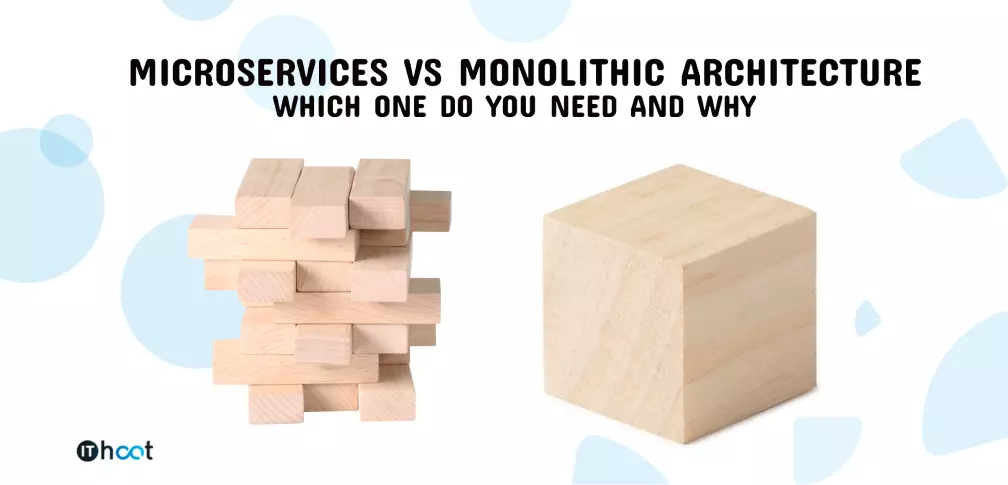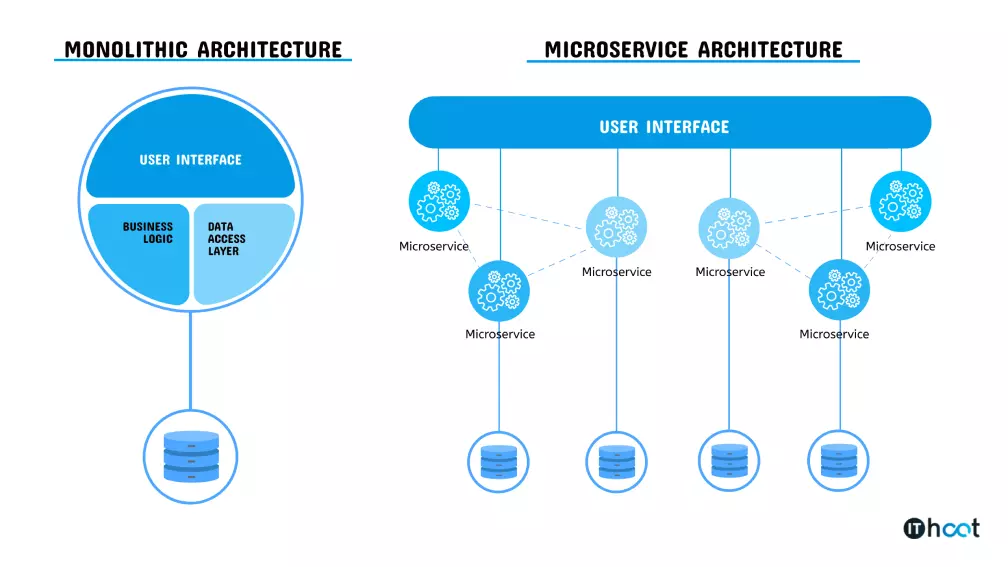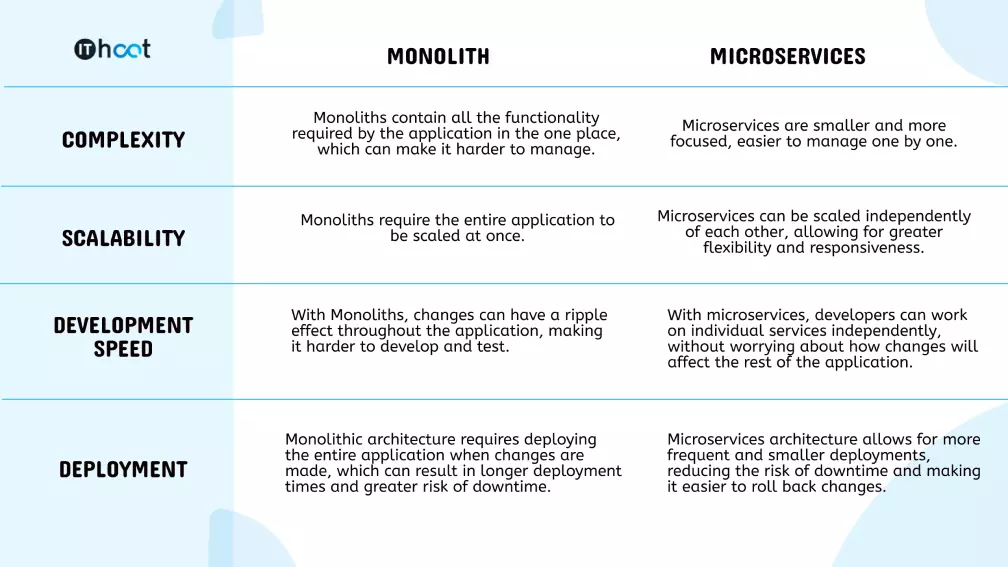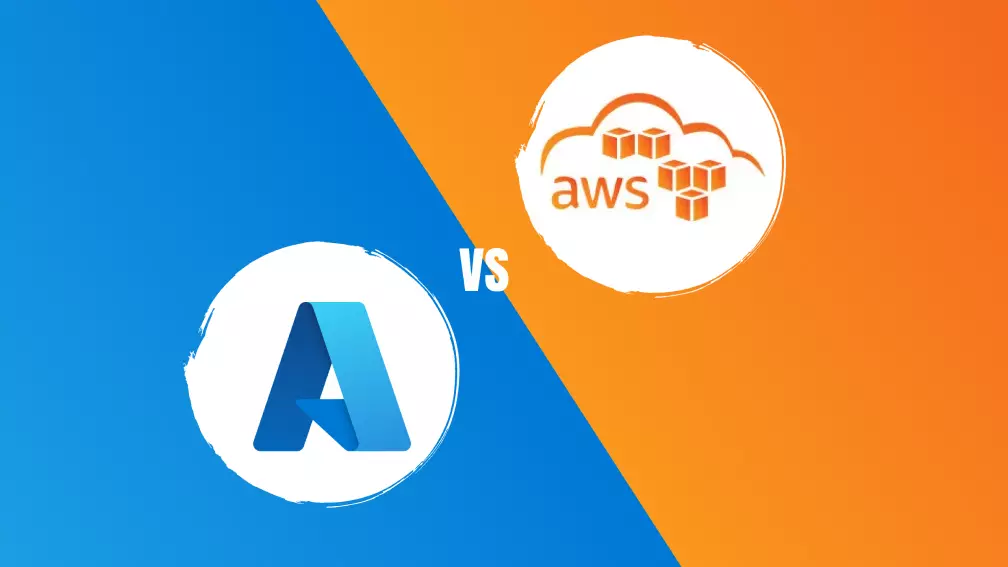Microservices vs Monolithic Architecture: Which one do you need and why

When starting a software project, the most obvious choice of architecture is often the monolithic approach. However, as the product grows and becomes more complex, this solid and inflexible architecture can become burdensome. Microservices, on the other hand, offer a more flexible and scalable option with their branched structure made up of smaller, purpose-driven pieces. So, which architecture is the best fit for your business?
What is that?
Monolithic architecture is considered to be a classic model of software that is designed as a self-contained entity. This type is just what it sounds like - large, solid, and adamant.
Microservices constitute a set of smaller seamlessly combined pieces with their own purpose, which make the system more flexible and scalable.

Who and why need monolith?
- Small and simple CRUD (Create, Read, Update, Delete) applications that usually contain straightforward business logic. They do not hold enough functionality to divide between services and actually do not need them.
- Prototypes and MVPs (Minimum Viable Products) have yet to form the list of necessary functions after user feedback. This means that the initial division of functions may not be relevant, and connections may need to be rebuilt. Using monolithic architecture, where everything is in one place, leads to faster development, reduced time-to-market, and gives the ability to make changes in the whole system at once.
- Small-scale internal tools with poor scalability have limited databases that can be efficiently handled with a single server.
Who and why need microservices?
- For large and complex applications with many features , microservices have a significant advantage. In the case of a breakdown of one service, only a part of the system would be unavailable, and the rest of the application would work in the regular mode. With a monolith, a single error leads to a complete shutdown of the entire system. Also, microservice architecture is much easier to scale and slightly change.
- E-commerce platforms and any other applications that involve a vast variety of functions, such as payment system, transaction processing, advanced security system, billing, etc. Also, inventory management and any manipulations with product catalogs entail using large databases and consequently different services for better efficiency.
- Social media platforms are closely related to the massive database of users’ data and content that is enlarging rapidly. In addition, handling all the functionality on a single service would cause downtime to increase. It has a profound effect on the user experience and overall engagement. A solution is breaking it down into little parts with specific purposes - the microservices.
- Financial systems possess similar characteristics to e-commerce platforms and social media, such as a vast customer database, extensive functionality, and a robust security system. However, a monolithic architecture would be sluggish and cumbersome. On the other hand, using microservices would simplify maintenance by focusing on each component separately. Also, such systems have to be reliable and with high fault tolerance, which is a significant advantage of microservices.

Final thought
When you analyze the application architecture compared to a company structure, you notice plenty of similarities. For instance, enterprises have more departments because there is a necessity for task division to specific groups of experts without overwhelming the rest of the company. Small businesses usually combine a few departments with similar purposes because of their cost efficiency. The same with microservices and monolithic architecture: each has its own purpose - combine or divide.
ransferring from a monolithic architecture to microservices is a rather delicate process, so one wrong solution can start a ripple effect and lead to unpleasant consequences.
That’s why our knowledgeable team is here to help! Visit our page about Re-engineering and migration and find out more about our approach. Do not hesitate to contact us!


